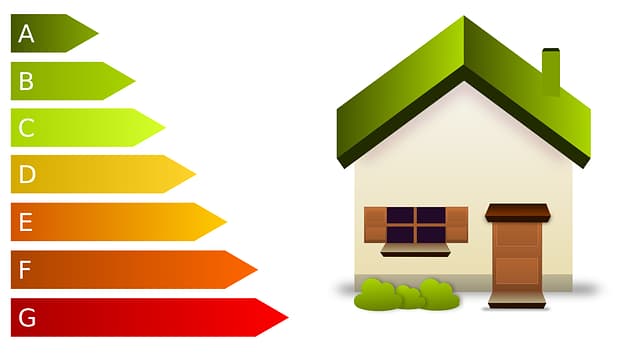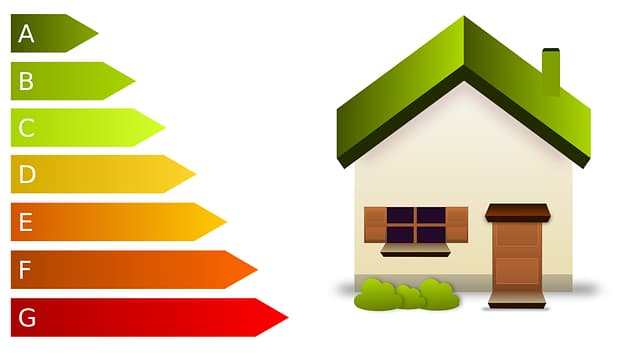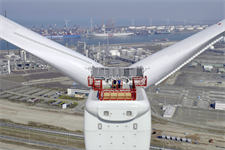New Option for Home Energy
Energy Disrupter

Posted on Apr 10, 2025 by Hanna DuBuque
The Liam F1 wind turbine offers a fresh approach to domestic renewable energy. Developed by Archimedes, a Dutch company, this turbine is designed for households, offices and commercial buildings.
It runs quietly and efficiently, using a simple mechanical design that reduces maintenance and lowers running costs. The turbine is noted for its ability to produce more energy than many previous small-scale wind turbines.
Distinctive Features of the Liam F1
The turbine employs a rotor that converts the kinetic energy of the wind into mechanical energy. Its shape, similar to a screw, helps the unit automatically align with the wind direction. This adjustment improves performance even when wind speeds are modest.
Key features include:
- Compact Size
The turbine is lighter and more compact than many other models. Weighing less than 100 kilograms, it is easy to move and install in various locations. - Quiet Operation
It produces very little noise during operation. This quality makes it well suited for urban settings and areas where noise levels are a concern. - High Energy Output
With a 1.5 metre diameter rotor, the turbine can produce up to 1500 kWh per year under a wind speed of 5 metres per second. In locations with stronger winds, the output increases even further. - Versatile Applications
Its design suits not only households but also offices and commercial installations. A scaled-down version is available for powering street lights and LED signs.
Comparisons with Alternative Energy Sources
The Liam F1 wind turbine has several advantages over other common renewable energy sources. A comparison with solar panels, hydroelectric systems and air source or biomass heating systems highlights its benefits.
Liam F1 versus Solar Panels
Solar panels have long been popular due to their ease of installation and minimal maintenance. However, typical panels generate only 500 to 600 kWh per year and require clear skies to work effectively. In contrast, the Liam F1 turbine can produce up to 1500 kWh per year with moderate wind speeds. This makes the turbine a more reliable option in areas where sunlight is inconsistent.
| Feature | Liam F1 Wind Turbine | Solar Panels |
| Annual Energy Output | Up to 1500 kWh | 500 to 600 kWh |
| Installation Requirements | Can be installed on flat surfaces | Extensive roof coverage needed |
| Operational Conditions | Functions in moderate wind | Requires clear, sunny days |
| Noise | Minimal | Completely silent |
Liam F1 versus Hydroelectric Systems
Hydroelectric systems use flowing water to generate power. Small-scale hydro setups can produce up to 5000 kWh per year. Yet, they require a steady supply of flowing water from a river or stream, limiting their use for many households. The Liam F1 wind turbine does not depend on water sources and can be installed on any level surface, making it practical for both rural and urban sites.
Liam F1 versus Air Source and Biomass Heating
Air source heat pumps extract heat from the air to provide household heating, while biomass systems rely on organic materials. Although these systems work well for heating, they are not designed to generate electricity. The Liam F1 turbine supplies electrical power that can run a variety of household appliances. Furthermore, biomass heating can produce carbon emissions, while the wind turbine offers a cleaner energy solution.
Benefits of the Liam F1 over these systems include:
- Dual Functionality
It generates electricity instead of only providing heat. - Lower Operating Costs
Its simple design reduces the need for regular maintenance and additional fuel sources. - Flexibility in Installation
The turbine can be placed in many locations without the need for external resources such as water or organic fuel.
Cost and Maintenance
Cost is an important factor when choosing renewable energy solutions. The standard model of the Liam F1 wind turbine is priced at around £5000. This unit produces more than half the annual power required by an average European household. The savings on grid electricity mean that the turbine can pay for itself in less than a decade, with annual savings of about £500.
For those needing more power, a larger model is available. This version can generate up to 7500 kWh per year and is expected to cost between £10,000 and £15,000. The larger model is ideal for households or small businesses with higher energy demands.
| Model Type | Price Range | Annual Energy Production | Estimated Annual Savings |
| Standard Model | Around £5000 | Approximately 1500 kWh | Around £500 |
| Larger Model | £10,000 to £15,000 | Up to 7500 kWh | Greater savings |
The turbine’s straightforward mechanical assembly ensures that maintenance costs remain low. With fewer complex components, there is less need for specialised repairs, which further enhances its appeal for domestic users.
Versatility and Practical Applications
The Liam F1 wind turbine’s compact design and light weight allow for a range of practical uses. It is suitable for both residential properties and commercial installations. Its quiet operation also means it can be installed in urban areas without causing disturbances.
A smaller version, known as the Liam F1 mini Urban, is designed for applications such as powering street lights, LED signs and similar urban infrastructure. This version is half the size and a quarter of the weight of the standard model, broadening the turbine’s usability.
Applications for the Liam F1 turbine include:
- Residential power generation
- Energy supply for office buildings and small businesses
- Urban projects such as lighting and public signage
These applications demonstrate the turbine’s flexibility and its potential to provide clean energy in various settings.
Original Source: https://www.aweablog.org/new-option-for-home-energy/
















